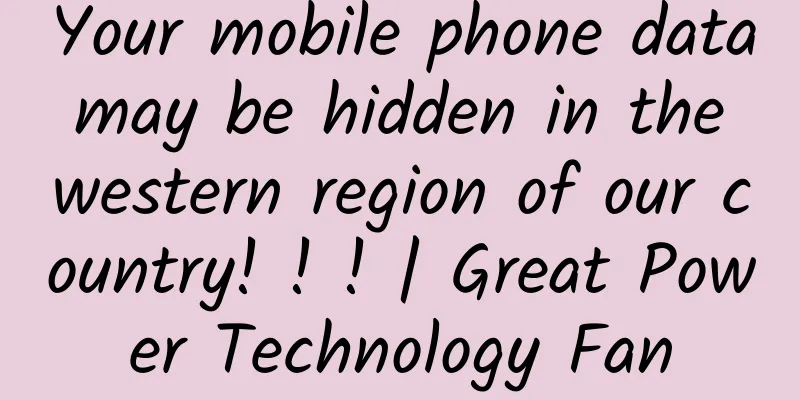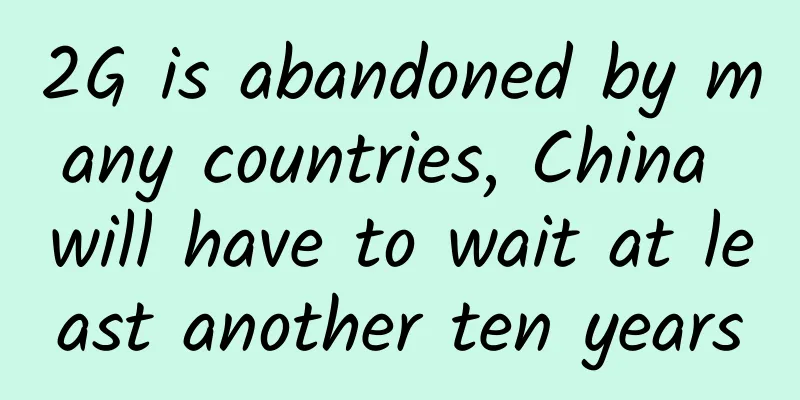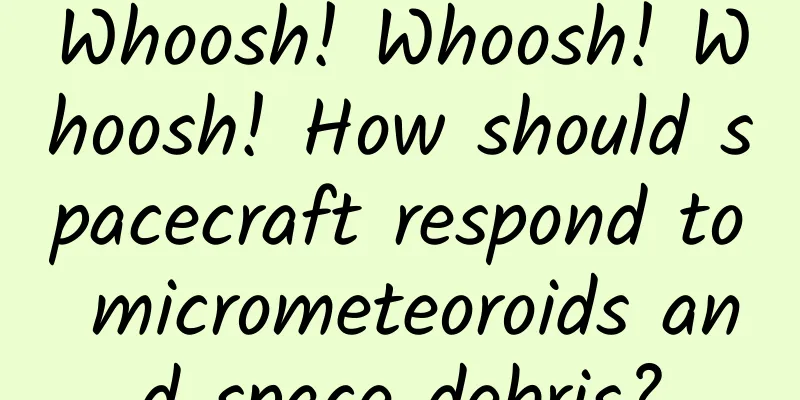How to do user operation? Share 5 points!

|
one In July, I attended an operations -related course in Shanghai. Among the students in the same group, there is a lady who comes from the advertising industry. In class, she asked the teacher a question: What is the difference between Internet operations and traditional marketing ? The teacher came from Tencent and gave a very standard answer: operations are user-demand oriented, and marketing is revenue-oriented. After the teacher finished speaking, the lady frowned and didn't continue talking. Obviously, she was not satisfied with this answer. I was also not satisfied with this answer, because I just quit my previous company some time ago. During the interview process of looking for my next job, more than five companies asked me the same question: What do you think operations is? When I entered the industry, my teacher told me that Internet products only have two quadrants: demand frequency and value. The best state for a product is to be in the first quadrant and to rise in a proportional trend (high demand frequency, high value). The inspiration this picture gives me in terms of operations is: The righteous will have many supporters, while the unrighteous will have few. As the saying goes, the right time is not as important as the right location, and the right location is not as important as the people. If you want to do a good job in operations, you must meet user needs. Products are created to solve real-world problems, while operations are the radar that sniffs out problems. So when the interviewer asked me what operations were, my answer was: user-demand-oriented, a bridge connecting users and products. Then the interviewer shook his head and said: Operations should use data analysis as a tool and be results-oriented. I asked, what was the result? The interviewer uttered a word: revenue. At this moment, I couldn't help but deeply doubt the beliefs I had always held. In any industry, if revenue is used to measure final results, it will be difficult to develop a sense of pride in the industry. The so-called revenue is just a numerical reflection of our current choices, work and circumstances when we are pursuing a certain goal, but now we are confusing cause and effect and pursuing numbers as a goal. After the interview, I thought about it for a long time and I still insisted on my original intention. I couldn’t take a string of numbers as a work goal to strive for. So in the subsequent interviews, I still stuck to my original answer. two Actually, this article was originally intended to talk about user operations , but why am I talking so much about it? It's just about constructing a context. The current environment is that almost every company uses KPI to measure work results, which also causes employees at the execution level to be eager for quick success and instant benefits. Especially with data analysis so prevalent, the user themselves is broken down into a string of data and presented on the screen. The job of operations is to stare at the data every day, to think about why it fluctuates and what points can stimulate it to rise. We deal with data every day, but avoid talking about the users’ attributes as human beings. In this case, there is no chance that you will be successful in user operations. Of course, I am not saying that data is not important. Humans are too complicated. They are afraid of lying to themselves. Data is the only thing that will not lie to people. But precisely because of the complexity of human beings, we should have more personal contact with them and establish a set of effective methods to collect psychological data in addition to behavioral data, and use a combination of qualitative and quantitative methods to make the final results accurate. Next, I will probably explain in more detail how to build a user operation system. This system is suitable for product operations , but students of new media operations can actually also extract what they need from it. After all, the broad scope is the same. Generally speaking, there is an entrance in an APP: user feedback. User feedback is the fastest way for operations to get close to users. Through this entrance, operations can collect users' complaints and suggestions about the products, and even become a seedbed for establishing communities and issuing small-scale announcements. But the bug is that many products hide this channel on the secondary page, resulting in the loss of many opportunities to collect opinions. From the perspective of communication, one-way communication is efficient but has poor communication effects; two-way communication is efficient but has strong communication effects. Although user feedback has a feedback-reply mechanism, it is actually a one-way communication due to its large span. The advantage of one-way communication is not only its efficiency, but also that users dare to tell the truth. We all know that people always like to say bad things about others behind their backs, because their sense of morality will make them feel ashamed and embarrassed when they are face to face. When users provide feedback through the user feedback portal, they are in a state of "speaking to nothing". In this case, their sense of shame is greatly reduced and many real emotions can be expressed. The operation staff can see every feedback from users in the background. What they need to do next is to classify these feedbacks and compile them into their own tables. Drawing a table is a very important step. The accuracy of the table determines the value of collecting user opinions. Some operations colleagues, because dealing with user opinions is tedious and boring, most of them read quickly and only want to complete the work as soon as possible, but they waste the biggest benefit of this job: understanding users. In operational work, whoever knows the users best has the most say. The fastest way for a novice to catch up with the veterans is to create their own user feedback form. McKinsey consultant Barbara Minto once proposed a very important principle in " The Pyramid Principle ": MECE (mutually exclusive collectively exhaustive) analysis method. The Chinese meaning of MECE is: Mutually Independent and Completely Exhaustive. When making a user feedback form, try your best to break it down from multiple dimensions. The dimensions cannot overlap, and in each dimension, try to think of as many factors as possible, striving to leave nothing out. When creating a user feedback form, there are three most basic elements: time, question type, and frequency. Time is extended linearly and can be color-coded according to activity time, normal time, and abnormal time. The types of problems can be roughly divided into three aspects: technical failures, product interactions and operational strategies. Each aspect can be divided into smaller levels. For example, technology can be subdivided according to various functional modules. As for frequency, it is the frequency of occurrence of various problems, which affects the scheduling of product adjustments and the rhythm of the entire operation activities. The regular user opinion collection form is enough here, but if you want to go a step further, you can try two more steps: self-analysis and competitive product analysis . Self-analysis means collecting user feedback and providing corresponding solutions from an operational perspective. This is actually thinking about the product in advance before the group discussion and cultivating one's own independent problem-solving ability. Of course, whether your solution is feasible requires competitive product analysis to test. Every product does not exist in isolation. Products are always iterating, and the leading products have already told us the solution. But it is important to understand the product logic of competitors when splitting them up, rather than copying them completely. You need to reverse engineer why they are successful and how they solve the problems of your own products. Why do this? If your product wants to do this, what changes need to be made? After building this set of thinking logic, look back at your own solution to see what shortcomings and advantages it has, and then combine them to complement each other. The thought process here is the process of improving one's own operational capabilities, and it is also the path of effort behind impressing others in group discussions. three If the user feedback form is an accumulation of data, then the response to user feedback is a good way to build a relationship with users. When we hide behind the computer and type out replies one by one, in fact, in the user's perception, we are the product itself. Many operations staff respond to users based on templates. Templates are of course necessary in large-scale work, but blindly abusing templates will waste opportunities to shape the product image and increase user stickiness. We imagine a product like this: when you are playing a board game , you throw out a pair of royal bombs and are about to carry the whole game, but suddenly the game automatically exits. When you return to the game again, the system determines that you have quit without reason and deducts 10,000 gold coins from you. So you go to the user feedback portal indignantly and type a series of words angrily. The next morning, you received a reply: Your feedback has been received. We are sorry to bring you such an experience. We will continue to improve. Thank you for your support. Will you explode? From my own experience, yes. I would angrily uninstall the game, curse the game operators, and jump into another board game. The operator knew nothing about this. Because of the template responses, the game became perceived by users as being indifferent to user experience , mechanical and dogmatic, which ultimately led to loss. Churn is a terrible thing. Users are not lost into the air, but lost to competitors. Double loss. If the operator changes the tone and replies in a human rather than a mechanical tone: Hello, friend, I am Xiaotuo, I am sorry to bring you a bad experience, Xiaotuo will urge the programmer to speed up the fix of the bug. Xiaotuo knows that the damage to his friend has been done, but he decides to take out 10,000 gold coins from his own pocket money as compensation, hoping that his friend will be a little happier. Perhaps the players' anger will subside a little. After all, don't hit someone who smiles at you. Generally speaking, a feminine and intimate tone of voice can enhance the image of the product and prevent players from abusing it and quickly extinguishing their anger. Of course, when you encounter user feedback, you should categorize it according to its nature: positive, neutral, and negative. Positive feedback is praise, neutral feedback is usually advice, and negative feedback is abuse. When responding to questions, responses should be given based on their different natures, and relevant reward and punishment mechanisms should be established.
Generally speaking, relevant solutions include general replies, virtual currency incentives, in-depth communication (mobile phone, WeChat ), feedback to customer service, etc. The concept of heart flow is introduced here. Psychologist Mihaly Csikszentmihalyi believes:
Task fission in games is the practical application of flow. One of the factors that produce flow is immediate feedback, and the operation’s response to user feedback determines whether flow can occur. When users experience flow, they will be in a good mood and will still provide feedback when they encounter a problem next time, thus creating a positive motivational trend. Of course, the final step of user feedback is still to establish templates. Templating is not mechanization, but adapting to the times and responding to users in vivid and personal language based on the accumulation of actual activities. If you really don’t know what to say, you might as well imagine that the user is sitting in front of you, and he angrily complains to you about the many problems of the product. If you have not practiced Taekwondo, what should you do to avoid getting beaten? It's time to show our will to survive. Four Let’s briefly review the context of the article:
These four steps actually cover the basic routines of user operations. The next step is to upgrade to community operations . Community operation is a very strange species. Although it has the word "operation" in its name, its fundamental attributes are actually linked to the product. The popularity of community operations originated from Xiaomi and Logical Thinking . It was precisely because of the success of Lei Jun and Luo Zhenyu that some people realized that this is how the Internet economy should be played. But unfortunately, there are only a handful of companies that have done well in community operations in recent years, and most of them are in the fields of knowledge payment , K12 education, etc. This is no wonder. Modern people complain about loneliness all day long. Everyone lives like an isolated island. It is difficult to socialize , let alone be active in the group. So the current situation of community operation in recent years is: a person flies a kite in windless weather, and at first he relies on running to get the kite off the ground, but it soon falls to the ground. Some people would explain it using the PLC ( product life cycle ) theory, believing that a group is like a product, going through the same process from birth to prosperity to decline. Yes, everything will disappear one day, but if the disappearance time is as short as a dozen days... I lose. Why can’t we admit that most community operations are just a way of forcing life? For example: A manufacturer who sells lighters saw that Xiaomi was so popular and wanted to build a community, so he set up a lighter community. I admit that everyone has a collecting habit to some extent. Some people may like to collect lighters, and they may be very interested in this community. But the problem is that the lighters sold by this manufacturer are cheap products that only cost a few dollars each, and members of the collecting community are not the target audience of this product. Perhaps after this boss has invested time and resources, the community has been established. Then what? How does he sell his lighters? The community is for generating revenue, but obviously, this boss has dug a hole for himself. The community is really just a community. So what is the point of the community? product. If you want to build a community, the product itself must have the attribute of connection. The reason why Xiaomi is so popular is that it connects people who pursue cost-effectiveness and enthusiasm; the reason why logical thinking is so popular is that it connects people who are anxious about reality and worried about the closure of their upward channels. However, the biggest product is people, and people are also the best connectors. Which group of people is the best at community operations? It’s self-media . Some self-media rely on opinions, some rely on beauty guides, and some rely on clothing matching. Many people think that we pay attention to these self-media because they produce useful information . No, it’s because they are interesting. Otherwise, we would go to CNKI instead of internet celebrity teachers; we would go to The Lancet instead of Dingxiang Doctor. We always fall in love with the person first, and then start to love the dog in the house, even though the dog is the first thing we see. Although Xiaomi and Logical Thinking are successful because of their products, they would not stand out among their peers without Lei Jun and Luo Zhenyu. As for a group of big accounts like New World View and Ten Points Reading , although the authors are very different, "New World View" and "Ten Points Reading" have been generalized into symbols of virtual personalities. In other words, when we read their articles, we will subconsciously regard them as real authors: one is called New World View, and the other is called Ten Points Reading. Humans trust humans, so products increasingly pretend to be humans. The above is the relationship diagram I drew about the relationship between the two. The product is centered around people, and is wrapped in the appearance of product functions, value, etc. However, the first thing that bystanders see is people. When user operations develop to a certain stage, the next step should be to build your own channels or to engage in community operations? Channels are tool-based communities, and some fission methods often use the banner of activities to allow users to join WeChat groups and QQ groups, and then use these groups to convey some product-related news. Although this is inefficient, it does broaden the path to reach users. Its advantage is that when the administrator @ everyone, it will jump directly to the first-level chat page, comparable to a service account. Of course, it can also occupy a place in the circle of friends . However, when using a group to release information, you must be careful not to include information such as recharge. Instead, the information should focus on new product developments and information that can help users. Community operation is complicated. Even the smallest community must have a basic organizational structure. For example, who is the community manager, rule maker, daily information publisher, daily topic initiator, and event initiator? How to liven up the atmosphere in the group and make the topics in the group related to the product? These cannot be explained in one or two articles. For students who are interested in community operations, I recommend reading K. Lewin's "Principles of Topological Psychology" to learn about the group dynamics and field theory he pioneered. This article focuses on the selection of channels and communities. Do the products you operate have the attributes of connection? Can you really improve user retention and stickiness with the help of communities? If you choose community operation, you must first determine the community attributes and the user import path (internal product import, external activity import), and then you can jump into the ocean of learning. five The last step of user operation is to write a user operation manual. If any set of practical operations cannot be output in a systematic manner, it means that the practical operations themselves are flawed. Writing a user operation manual is not only a summary of one's own work, but also a process of finding and filling in the gaps. This is actually quite interesting. When you type the four big words "user operation" in the center of the mind map, you must think about its secondary context. At this time, restore the actual behavior in the work and sort it out in chronological order. In the process of sorting out, you will find that some places can be better and have more creative ideas; some places can be completely omitted. In a way, writing a manual is a review of your work. Reviewing is the best way to give back to your biggest and most loyal user: yourself. Of course, some students have never written a similar manual and have no general framework in mind. Here are a few simple frameworks for you: The first one: 5w mode The so-called 5w model is the basic model in communication studies, including communicators, recipients, channels, information and effect feedback. If we regard the 5W as a secondary context, the communicator section can include the behavioral attributes and natural attributes of the communicator, and the same applies to the recipient. Channels may include the characteristics of communication channels, cost-effectiveness, etc.; information refers to copywriting; and effect feedback includes communication methods, table compilation, etc. Although it is a bit forced, in actual operation, it can be changed according to the actual situation, but the most important thing is that the overall logical framework can be self-consistent. Second: User Experience Map This method is one I often use in my work. Its purpose can be summed up in ten words: come from reality and go to reality. Now, let’s imagine that we are opening an app. The moment we click on the desktop icon, we begin to interact with the product. Next, we start to explore, register, and use it, and finally one day, there are obstacles in use. What will we do then? Complain; make suggestions; or even uninstall. When one day you uninstall the app from your phone after using it n times, the product life cycle for you will come to an end. Okay, now let’s return to the operator’s status. You have seen the “lifetime” of a user using your product, and you have control over his different behaviors in various scenarios. Now, you need to give a remedy based on your reaction at that time. When you write out remedial measures according to each scenario, the prototype of the user operation manual is born. Compared to those standard manuals that are dozens of pages long, your manual may be only one page long, but it is a methodology that is unique to you. Due to my personal experience, this is all I can say about user operations for now. But life is long, and we are always iterating and growing. I hope we can work together to optimize our own operation manuals and become excellent operators. Source: Shanbao Orange |
>>: After promoting tens of millions of information flows, I have summarized these 6 points!
Recommend
What details should be paid attention to in SEM bidding?
Detail 1: Keyword accuracy. The core theme of SEM...
How much does it cost to attract investors for the Hegang fast food mini program? What is the investment price for the Hegang fast food mini program?
How much does it cost to attract investment in th...
German outstanding automobile companies and technology companies jointly develop fuel cells
According to foreign media reports, the German go...
Three growth models and implementation principles of Internet finance!
1. What do we mean when we talk about user behavi...
Brand marketing promotion: How to learn the product placement of "The Debaters"?
Since its inception, product placement has faced ...
108 compulsory courses to accompany children's growth-Hong Lan
Hong Lan: 108 compulsory courses to accompany chi...
Double 11 air conditioner inventory: prices begin to cool down, and value rises
Against the backdrop of a decline in both volume ...
An ideal city on the shore of Lingdingyang, 50 pictures tell a story of Zhuhai
Today is the anniversary of Macau's return to...
20 thoughts on marketing, copywriting, and new media!
1. There is a very famous marginal effect in econ...
This preservative commonly found in cakes and breads is actually a "deadly assassin"?
It has been almost half a month since the Mid-Aut...
The UK's controlled nuclear fusion experiment achieved 59 megajoules in 5 seconds. How far is it from benefiting mankind?
According to news released by some media on Febru...
Poor traffic conversion recently? Share 8 high conversion techniques!
If you were asked to choose between the following...
The logic of event promotion planning process!
I don’t know if many operations colleagues have h...
I heard there is a mysterious "time machine" in the tunnel? The secret behind it is...
In the evening, the gentle breeze in the Huajiao ...









